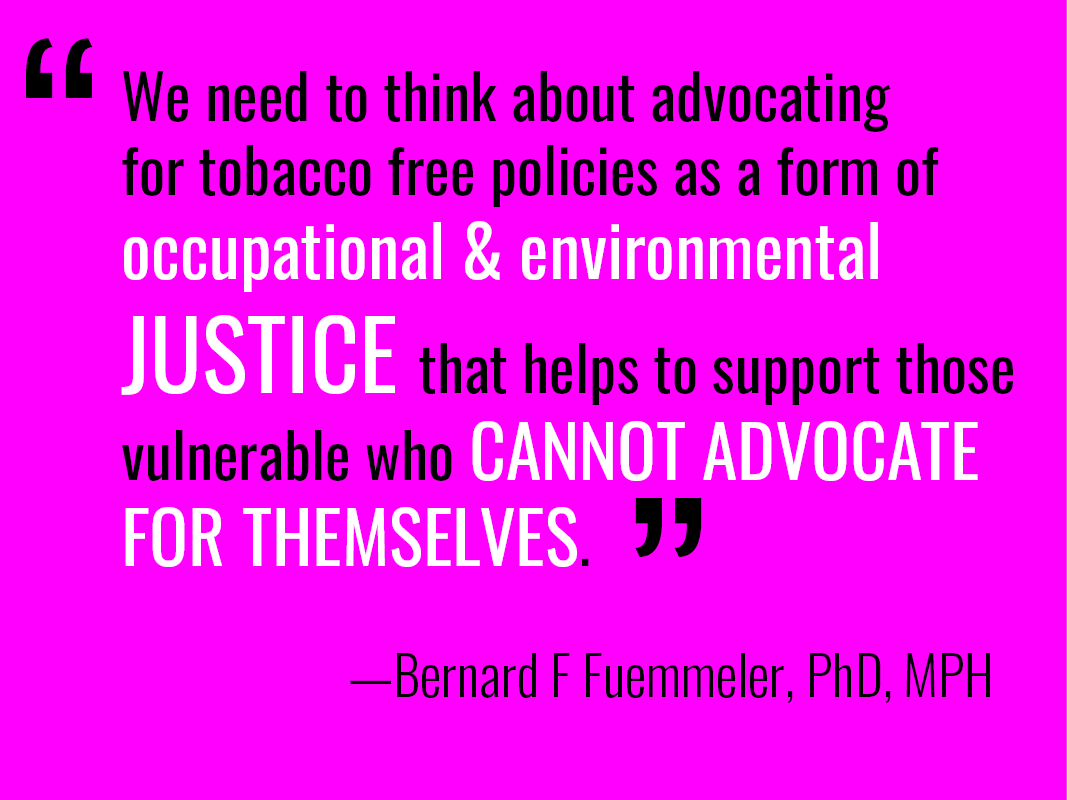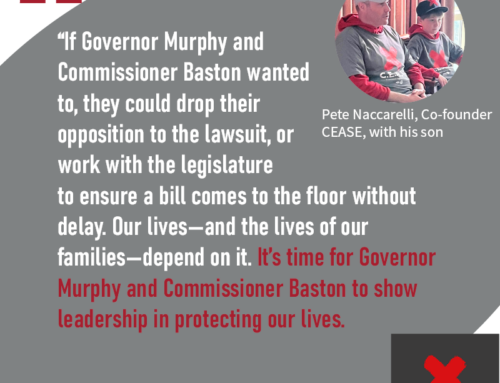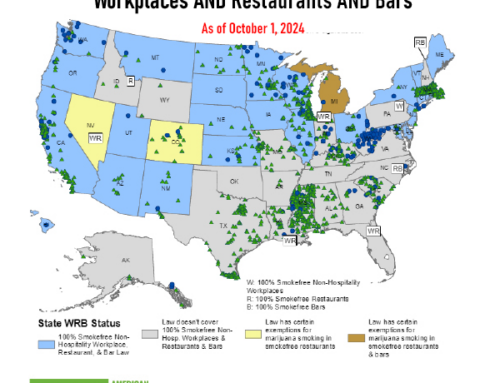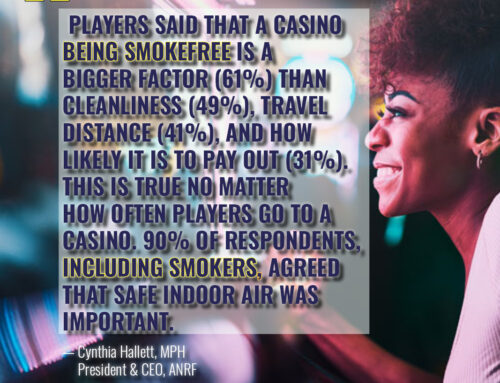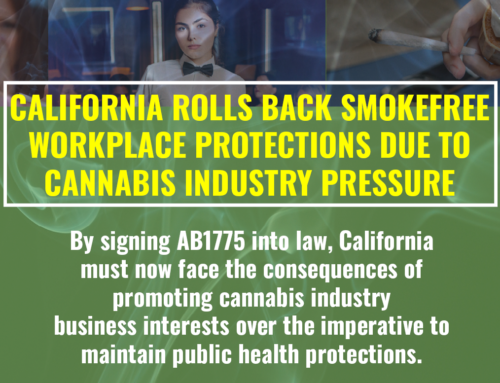New study on impact of low levels of secondhand smoke exposure to pregnant people is an urgent reminder on the importance of eliminating indoor smoking in casinos and other hospitality sector workplaces
A new study looks at the effect of low level secondhand smoke exposure in pregnant people and risks to their unborn children.
The study’s lead author, Bernard F Fuemmeler, PhD, MPH, provided the following insights based on his findings and our efforts to expand smokefree protections:
“Pregnant [people] and their newborns are vulnerable to the health consequences caused by tobacco smoke and even secondhand smoke should be avoided. Tobacco free, clean air policies have reduced tobacco smoke exposure in various areas, so much so that many of us cannot imagine people smoking on airplanes or in restaurants anymore. The findings from our study draw further attention to the importance of reducing tobacco smoke exposure in our homes, workplaces, and even public spaces within our communities, like parks and bus-stops. We need to think about advocating for tobacco free policies as a form of occupational and environmental justice that helps to support those vulnerable who cannot advocate for themselves.”
Bernard F Fuemmeler, PhD, MPH
In a media statement regarding the study, Dr. Fuemmeler remarked:
“What we recommend to [parents] in general is that no level of smoke exposure is safe,” said study lead author Bernard Fuemmeler, Ph.D., M.P.H., associate director for population science and interim co-leader of the Cancer Prevention and Control program at VCU Massey Cancer Center. “Even low levels of smoke from secondhand exposure affect epigenetic marks in disease-related pathways. That doesn’t mean everyone who is exposed will have a child with some disease outcome, but it contributes to a heightened risk.”
More information on no safe level
Even brief and very low levels of exposure to secondhand smoke are dangerous. Ventilation systems do not address the health hazards and are not a substitute for safe indoor air. For policymakers, unions, companies, and ESG investors, this is a reminder that secondhand smoke is still a top health hazard that can be eliminated simply by shifting smoking to outdoor areas and implemented so that staff and the public are not impacted.
We’ve known for a long time
- The 2006 U.S. Surgeon General’s Report, “The Health Consequences of Involuntary Exposure to Secondhand Smoke,” concluded that separating smokers from nonsmokers, air cleaning technologies, and ventilating buildings cannot eliminate secondhand smoke exposure, stating that conventional air cleaning systems cannot remove all the poisons, toxins, gases, and particles found in secondhand smoke. Additionally, heating, ventilation, and air conditioning systems can distribute secondhand smoke throughout a building.
- The 2010 U.S. Surgeon General’s Report, “How Tobacco Smoke Causes Disease,” confirmed that “low levels of smoke exposure, including exposures to secondhand tobacco smoke, lead to a rapid and sharp increase in dysfunction and inflammation of the lining of the blood vessels, which are implicated in heart attacks and stroke. … Damage from tobacco smoke is immediate.”
Ventilation does not remove smoke from inside buildings
- American Society of Heating, Refrigerating, and Air Conditioning Engineers (ASHRAE), the leading professional association, clarified their findings in a position statement:
- “The building and its systems can reduce only odor and discomfort but cannot eliminate exposure when smoking is allowed inside or near a building. Even when all practical means of separation and isolation of smoking areas are employed, adverse health effects from exposure in non-smoking spaces in the same building cannot be eliminated. Neither dilution ventilation, air distribution (e.g., “air curtains”), or air cleaning should be relied upon to control ETS exposure.”

